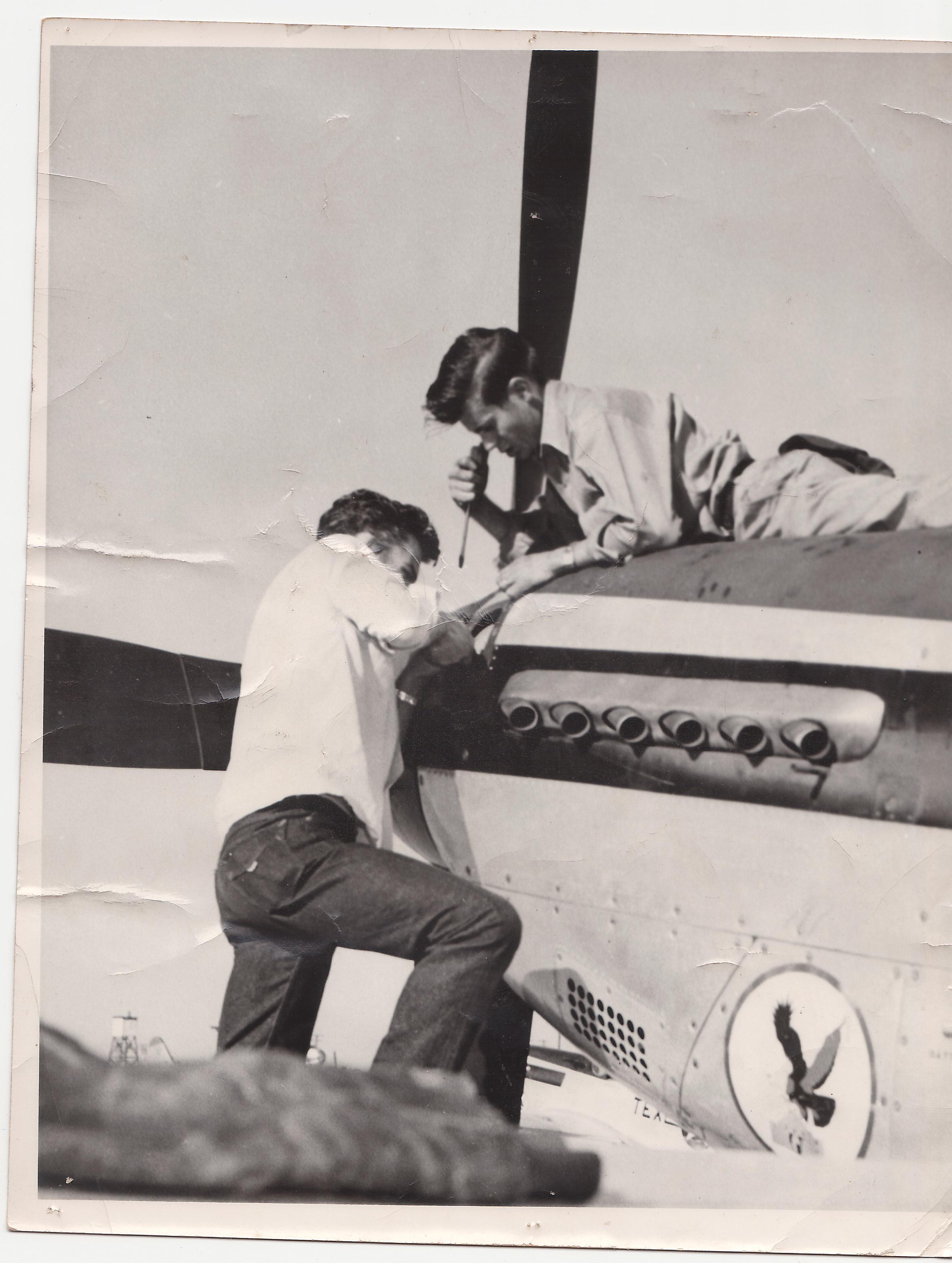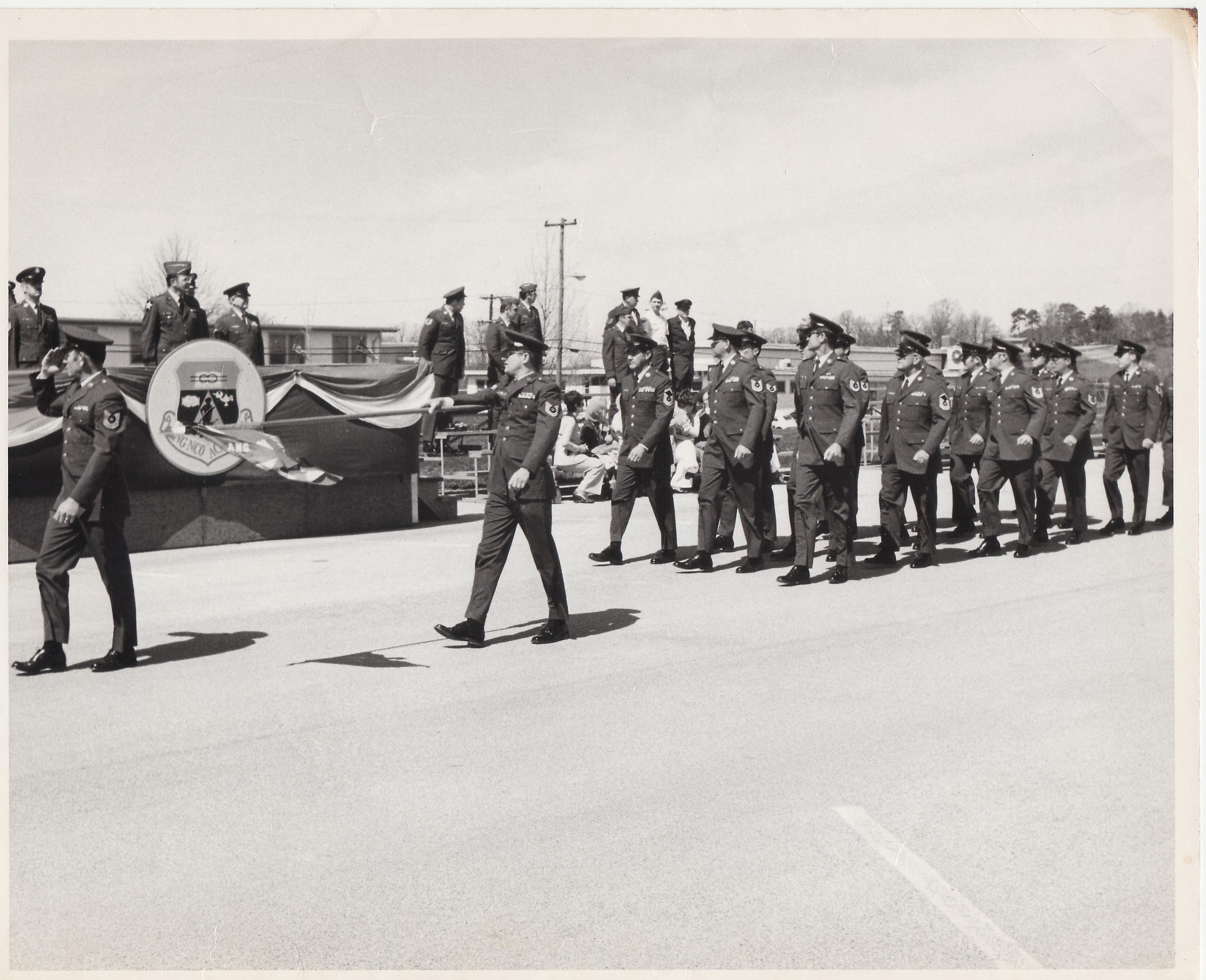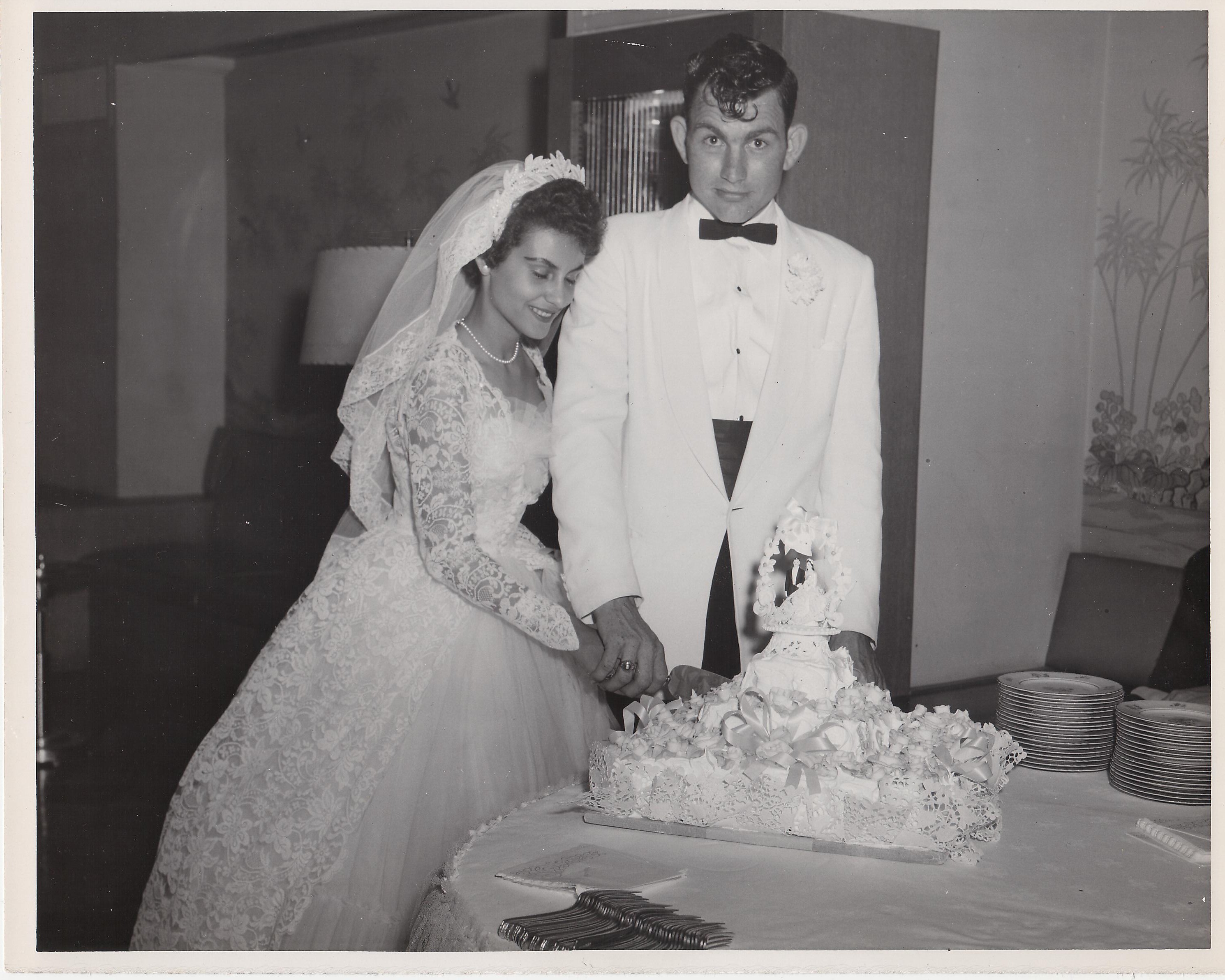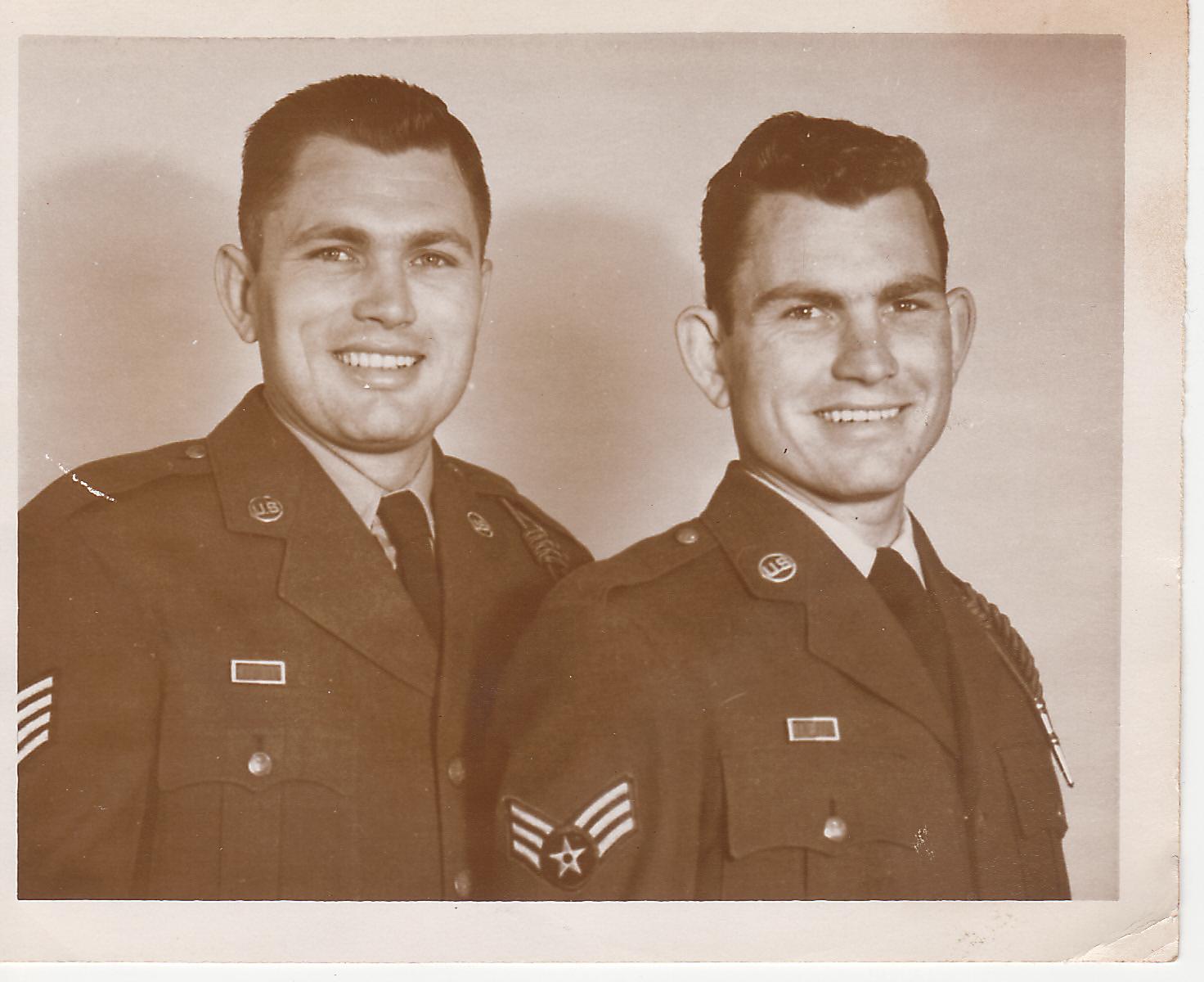TRANSCRIPTION
What was a typical day in the Cold War like?
One of the things that happened during the Cold War was, for example, the Cuban Missile Crisis. We were under the Air Defense Command, the ADC, which was aircrafts which would go and intercept bombers and anything coming into the United States and have to identify them. We always had two aircrafts on a 15 minute alert. Well during the Cuban Missile Crisis, they called us up to active duty and we had twenty-four F-102's, fully loaded on the 15 minute alerts twenty-four hours a day all during the Cuban Missile Crisis. So there were nights I would have to spend on the flight lines sitting there waiting with an airplane to be ready to launch it if we had to, and we had twenty-four hour crews. I guess you would say that that was a typical day. Russia would Launch bombers that would come over the Arctic Sea and come in by Iceland and then they would go down along Greenland and go down the eastern coast of the United States to Cuba. Well there was a unit in Iceland that would intercept them and follow them along until the other aircrafts from the United States and follow them out. Well they had to go to a unit function in the States for an ORI, Operational Readiness Inventory, and then they deployed us to Iceland. We took our aircrafts and went to Iceland, fully loaded, and everyday just about we would have to scramble those aircrafts and go up and intercept the Russian bombers and follow them down the east coast till they were intercepted. That was about it as far as it went. Our duties during the Cold War were basically the defense of the United States with air defense.
What kinds of aircrafts were used during your service in the Air National Guard?
Okay, the first aircraft I ever worked on was a P-51D. Then we moved to Kelly AFB in 1956, and we got F-80's. We flew the F-80's for quite awhile and then we went to the F-86D and flew that for quite awhile. Then we went to the F-102, we flew the 102's for a long time out on alert and we went to the World Wide Weapons meet and won second place and had all kind of fun with the 102. Then we went out of the ADC, and when we went out of the ADC they really didn't have an aircraft to give us, so they gave us the F-84F. We flew those for about a year and then went into the F-100. We flew the F-100 for quite awhile and then went into the F-4's and F-4C's. After those we got the F-16's and that's the plane that I last worked on when I retired.

What kinds of bombs or ammunition were on the planes that you worked with?
Okay, on the F-80 there were just 50 caliber machine guns. When we went to the F-86D, it had rockets, 24 2.75 FFAR rockets. The F-102 had 24 rockets and 6 air-to-air missiles. When we went to the F-16, it had the 20 millimeter Gatling gun and also had all kinds of bombs and missiles. It had the Sidewinder missiles on the wing tips, it had numerous weapons you could carry on it.


How is the military different today?
Well technology more than anything else. Everything is so improved in technology. We've got missile defense systems now that can shoot missiles down, we have aircrafts now that are flown all over the United States and the world that don't have pilots, they're unmanned aircrafts. So the technology is mainly what's increased so much since my time.
You had told me once that you would just take an airplane to go to random places to get things like some lobsters from Maine and then come back. Would you even be able to get away with that now?
No, that was back before everything was politically correct. There were times where we would have an aircraft getting ready to take off, a TF-102 which has two seats, and they only had one pilot. They would come out and get one of us crew chiefs and ask us to get into the other seat and fly with them. Every once in a while we would get to fly with them, but now everything is so tight and politically correct that you just cant do that stuff any more.



What types of shenanigans would you get into during your deployments?
We were always pickin at each other and had things goin on. When we went to the World Wide Weapons meet at Tindal AFB in 1961, with the F-102's, we had the trailer right next to us was from Alaska, and it was a competition type deal. I can remember that we had a Texas flag that we would put on our trailer, and then they would put a bigger flag up, and then we would put an even bigger flag up, and then they put an even bigger flag up, and finally we went downtown and bought all the material we could. We made this huge flag, put it up on a pole. We took the top rail off of the baseball diamond to get to the pole. The next morning the tower called us and told us we had to take it down because the end of the runway because the flag was blocking their view. The Alaskans had a totem pole brought in and set it next to their trailer, and we had an aircraft comin in from Kelly AFB, and so I called home and had them go to the Lone Star Brewery and bring a longhorn steer set of horns mounted, and of course they were plastic and the had rubber ends on them. Well I was sittin up against the trailer and we had the horns on the front of the trailer and one of the pilots from the Alaskan trailer walked over and he was lookin at it and he reached up there and he got ahold of the end of that horn and he shook it and it was rubber, and he said aw that ain't real its rubber! I don't know what made me say it but I said well wait a minute, wait a minute, what do you know about longhorn steers? And he said well that can't be real! And I said look, the longhorn steer is the only steer that's born with horns, and when it's a baby and comes out of its mother those horns are limber and they fold back so that the mother can have the calf, hell that's just a baby, it hadn't even gotten its horns all hard yet. Oh boy, they gave me a hard time about that, but they laughed and thought that was funny. But things like that went on all the time between the units, but most of the time it was pretty serious and we stayed pretty busy.
How was life in the military with a wife and kids?
Well in my situation, being with the National Guard unit, we got deployed quite a bit, but it was usually only for two weeks or three weeks or sometimes up to six weeks, but usually it wasn't a long one year deployment. It wasn't that big of a deal with us, but of course my wife ended up having to raise the kids while I was gone on these deployments. I went to Germany to get the F-16's, and I was over there for three weeks. When we went to Turkey, I was over there for about three weeks, but most of the deployments were from three or four days to three weeks so it wasn't so bad.



Is there anything else you would like to add to this interview?
Well there was this one time, when we had missions going out for some reason, if the pilot had an extra seat in it they would get a crew chief to go with them. Well one Saturday morning, they came to me and asked if I wanted to go with them in this F-102, and I said sure so I went and got my flight suit on and got in the aircraft and we took off. We went out on a mission and we were coming back and the pilot said lets go look at Medina Lake, and I said oh good my parents are up there with my brother and my daughter. We came flying over the lake and I pointed out to him where my family was. I said right there on the side of that hill is a cabin and that's where my parents are, and I said oh look, there's a boat down there in the cove and it's got my little brother and my daughter in it, and he said really? And he made a big turn and he came around and said well lets see if we can get a close look at them., and he came down and he couldn't have been too far off that water, he was right on it, and he went right over the top of Cindy and Larry in that boat, and of course they saw him comin and they just dove off the sides. When he went over the boat he went up the hill and went right over the cabin and mother and Aunt Kay were sittin there and had their beers in their hands and when he went over he lit the burner and it made a big boom sound and they spilled beer all over the place and mother said THAT'S GOTTA BE BILL IN THAT THING! And sure enough, after I got off I went down to the lake and they gave me hell. Things like that if you did nowadays you would be thrown in jail.



